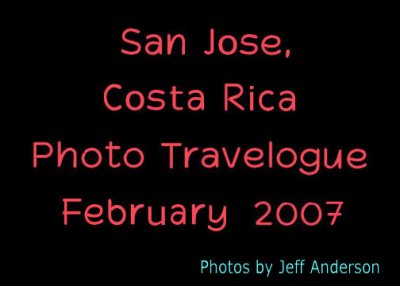
San José, Costa Rica cover page. |
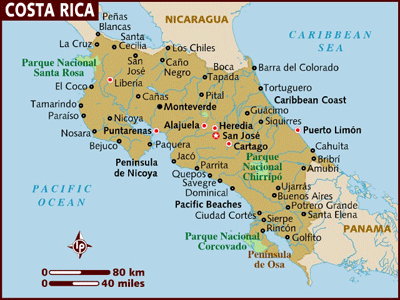
Map of Costa Rica with the star indicating San José. |
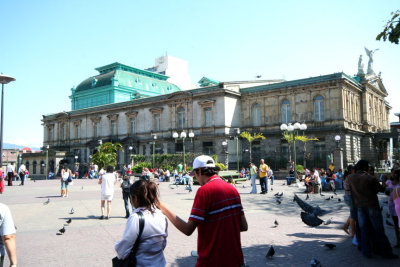
People walking in Culture Plaza (Plaza de la Cultura) in San José, Costa Rica next to the National Theater. |
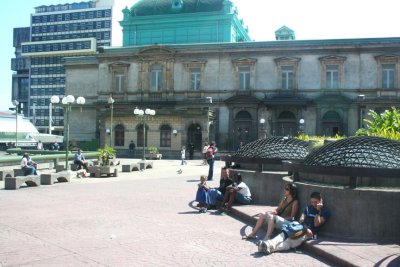
The plaza is a central meeting point for people in San José. |

Like most major cities, the pigeons are ever-present in San José. |
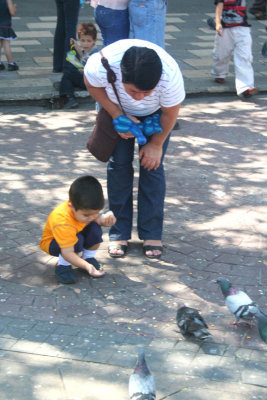
A mother and child were feeding the pigeons. |
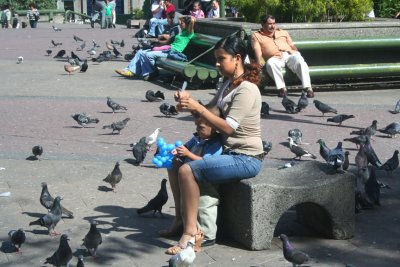
Here is another mother and child scene in Culture Plaza. |
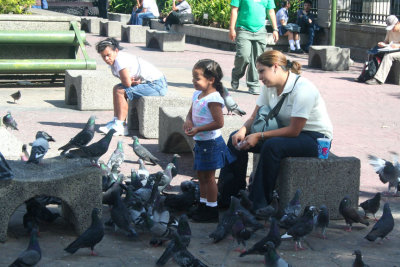
Another kid feeding the pigeons. |
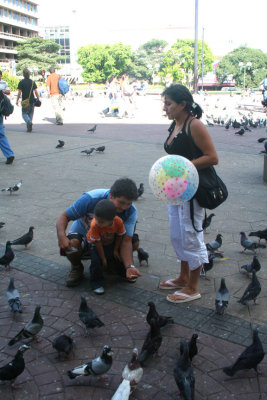
A family scene in Culture Plaza. |

Ongoing street acts like this clown provide for great public entertainment in Culture Plaza. |
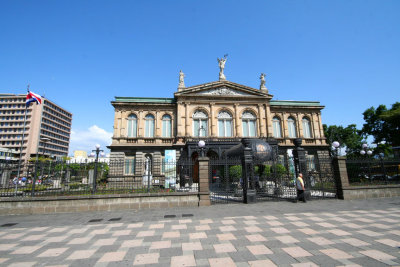
A wide angle shot of the National Theater, San José's foremost architectural showplace. |

This ornate opera house was built in 1897. |
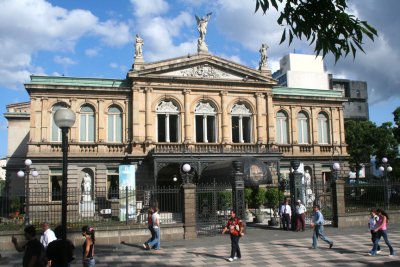
It was built because a spoiled Italian opera diva, Angela Pelati, refused to perform in San José until the theater was built. |
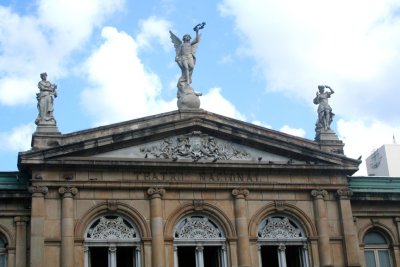
Impressive sculptures adorn the top of San José's National Theater. |
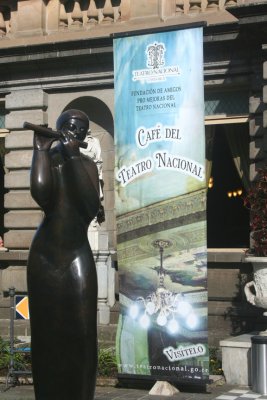
A modern flutist sculpture with a sign for Cafe del Téatro Nacional which has the best coffee in San José. |
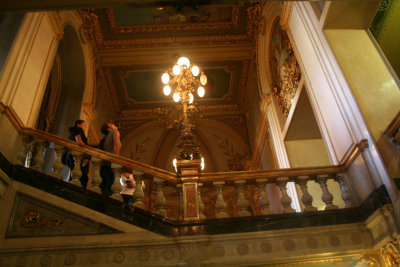
Interior shot of the National Theater with a marble staircase, a chandelier and a golden ceiling. |
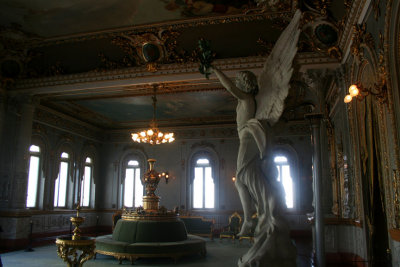
This is a very ornate lounge on the second floor where people converge between acts. |
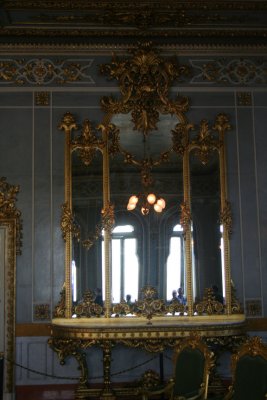
This very decorative mirror is in the lounge. |
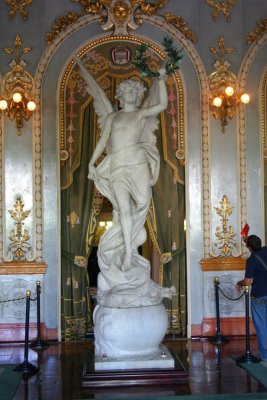
This marble sculpture is also in the lounge. |
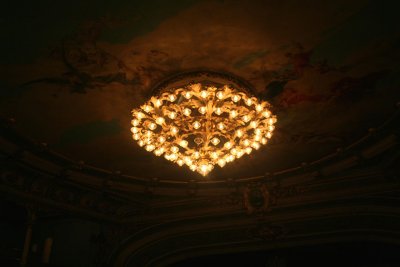
The theater is adorned by these beautiful chandeliers. |
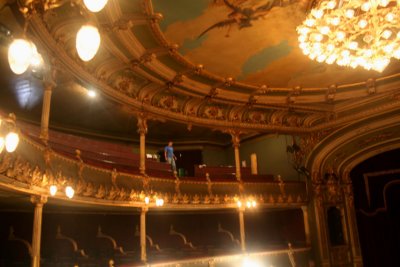
View of the interior of the theater and the chandelier. |
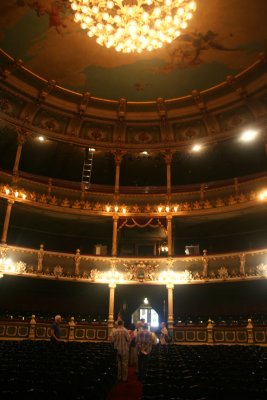
The theater has many different levels. |
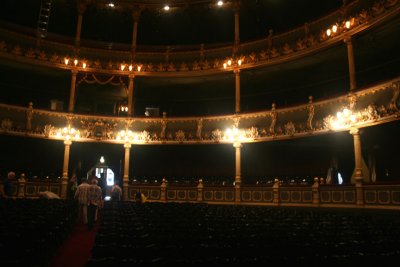
View of the back of the theater with people leaving. |
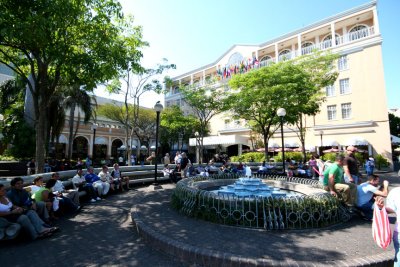
Outside of the National Theater is this fountain with the Grand Hotel in the background. |
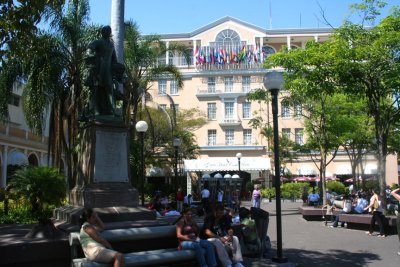
A park bench scene in front of the Grand Hotel. |
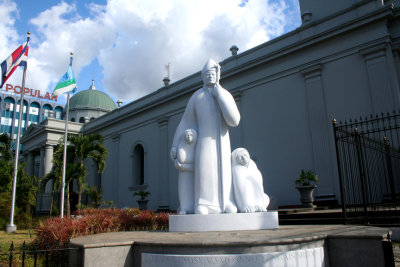
Statue of Pope John Paul II outside of Metropolitan Cathedral. |
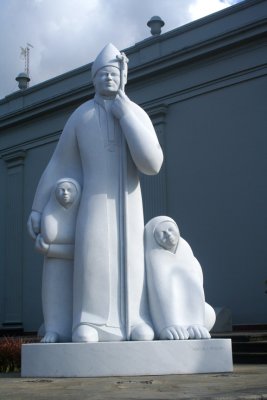
Close-up of the homage to John Paul II who visited Metropolitan Cathedral in 1983. |
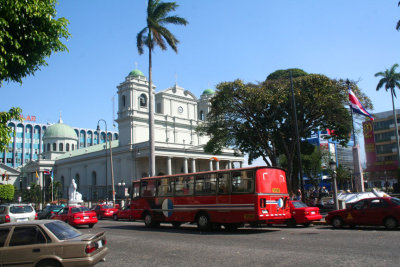
Traffic passing by Metropolitan Cathedral in San Jose. |
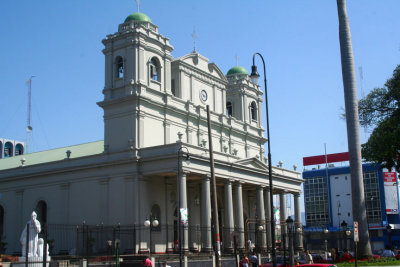
View of the neoclassical Metropolitan Cathedral which is the biggest church in San José. |
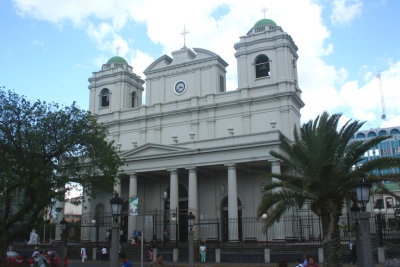
Façade of the Metropolitan Cathedral which was built in 1871 after the original was destroyed in an earthquake. |
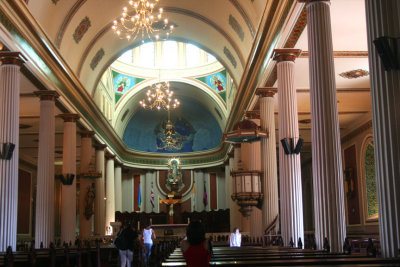
The interior of the cathedral is adorned with a small dome and stained glass windows. |
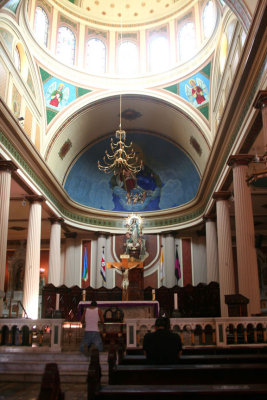
The interior is also decorated with patterned-tiled floors, painted wooden columns and plenty of bas-reliefs. |
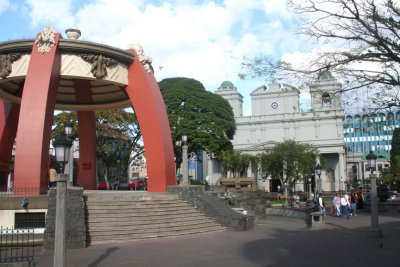
In front of the Metropolitan Cathedral is a spider-like pavillion donated by former Nicaraguan dictator Anastasio Somoza. |
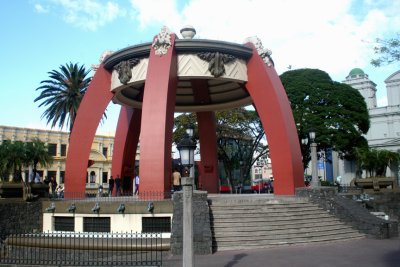
Parque Central is known for its free music concerts and for its pickpockets! |
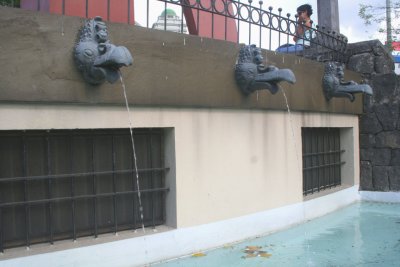
These bird-like fountains are attached to the side of the pavillion. |
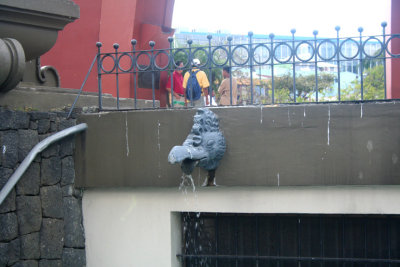
Water is spouting from the mouth of the fountain. |
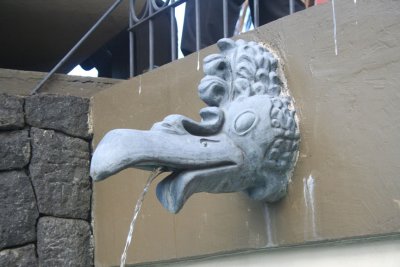
Close-up of the fountain showing the bird's prominent beak. |
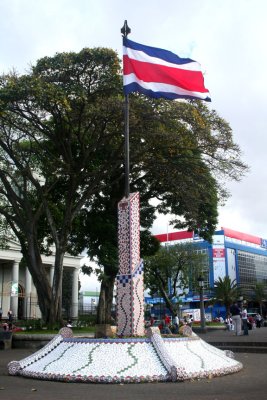
An unusual tiled-flag stand with the Costa Rican flag on display in Parque Central. |
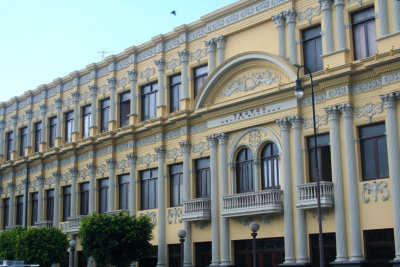
View of Teatro Melico Salazar, built in the 1920s and named after Costa Rica's most famous opera singer. |
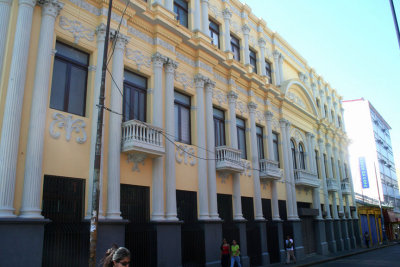
As a young man, Melico Salazar moved to Italy and trained in Milan. He moved back to Costa Rica in 1937 (at age 50). |
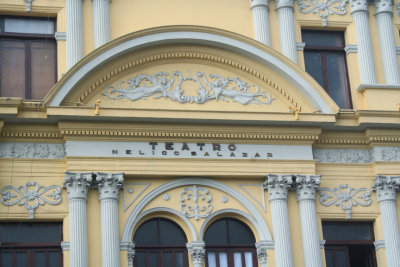
Close-up of the ornate baroque façade of Teatro Melico Salazar (across from Parque Central). |
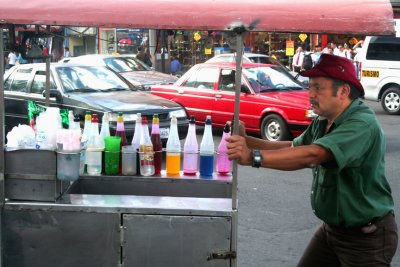
From Parque Central, I walked down Avenida 2 and passed this street vendor selling colorful beverages. |
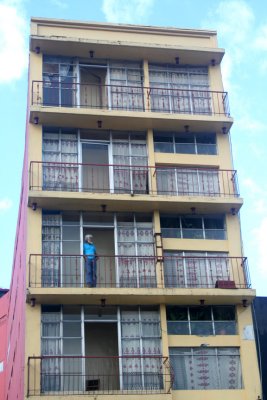
A lone man standing on the balcony of a deserted-looking apartment building on Avenida 2 in San José. |
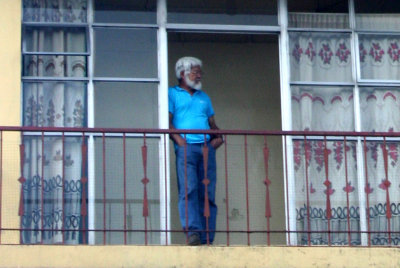
Close-up of the lone man on the balcony. |
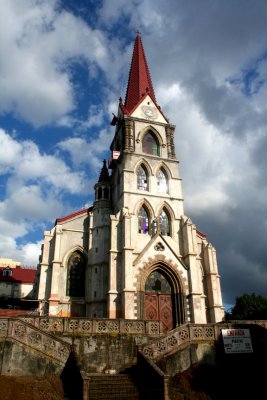
View of the Gothic-style Church of La Merced on Avenidas 2-4 with neoclassical elements. It is the oldest church in San José. |
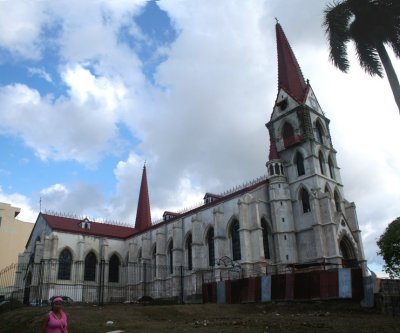
Built in 1909, La Merced is noted for its sculpted wooden ceiling, slender spires and arched windows. |
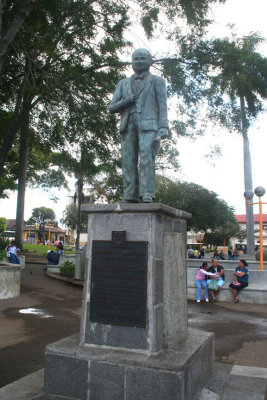
Statue of Braulio Carillo Colina (1800-1845) who was President of Costa Rica. The statue is in the park in front of La Merced. |
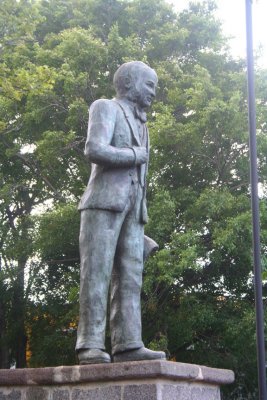
He proclaimed Costa Rica a sovereign and independent nation in 1838. |
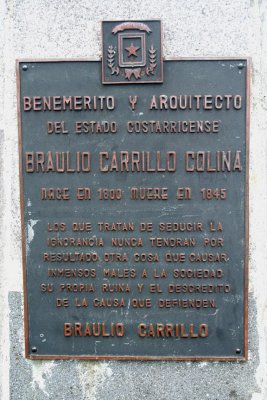
Plaque dedicated to Braulio Carillo Colina under his statue. |
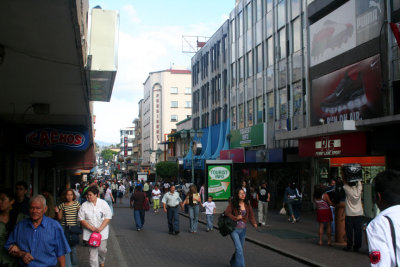
People walking down the busy Avenida Central at lunch time in San José. |
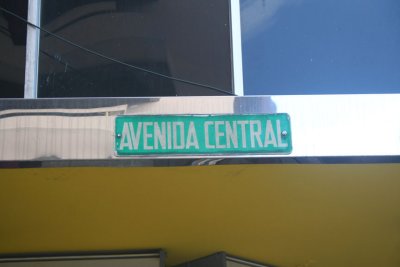
Street sign for Avenida Central. |
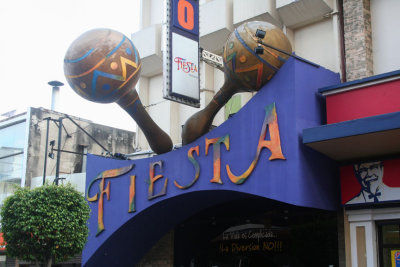
An interesting entrance sign to a nightclub on Avenida Central with colorful maracas on display. |
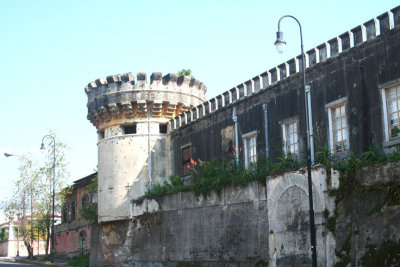
This wall with a watchtower is part of the Museo Nacional of Costa Rica. |
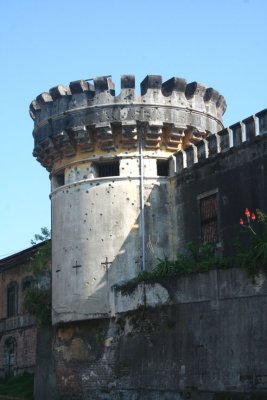
The museum building is housed in a 114-year-old Bellavista Fortress last used during the 1948 revolution. |
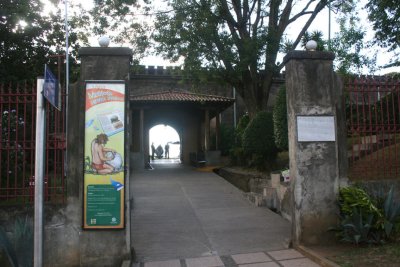
Entrance to the Museo Nacional in San José. |
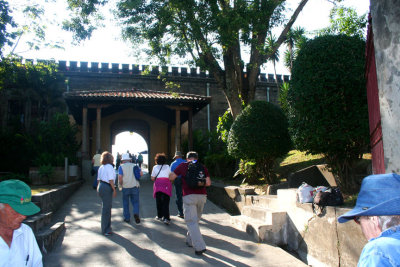
There were many people coming and going to the Museo Nacional on the day that I was there. |
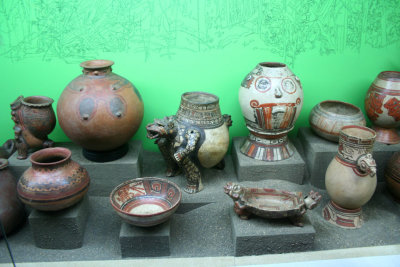
Pre-Columbian pots and bowls on display at the Museo Nacional. |
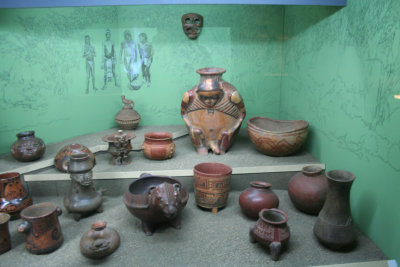
More unusual pre-Columbian artifacts on display at the museum. |
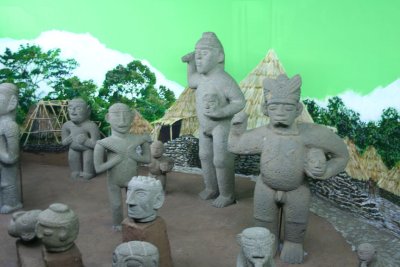
Stone carvings of pre-Columbian figures at the Museo Nacional. |
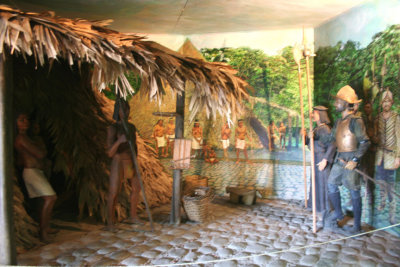
Display at the museum of Spanish conquistadors arriving at an Costa Rican settlement in the 16th century. |
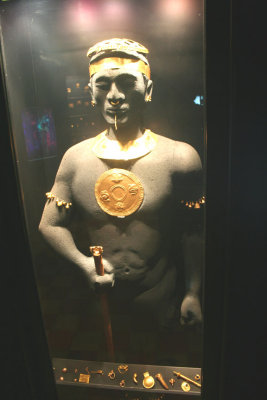
Statue of an indian warrior with exquisite gold decorations. |
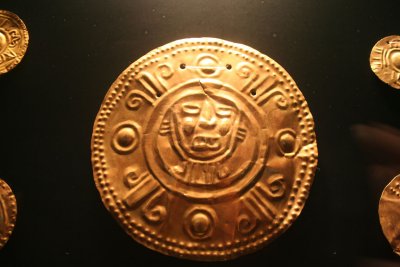
A beautiful golden artifact on display in a separate Sala de Oro at the Museo Nacional. |
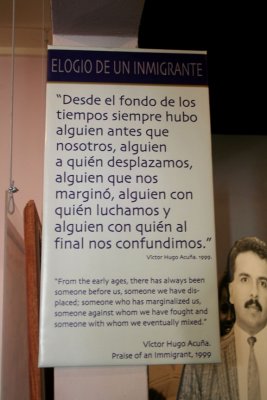
I saw another exhibit at the museum honoring immigrants who have come to Costa Rica. |
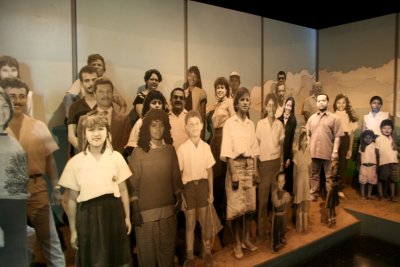
Display at the museum showing the many ethnic groups of immigrants. |
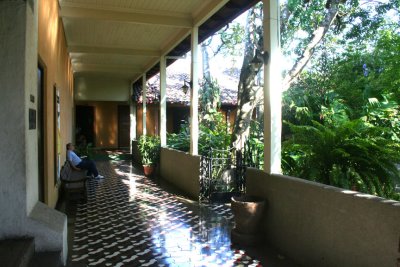
An open porch in the interior of the Museo Nacional with beautiful tiles. |
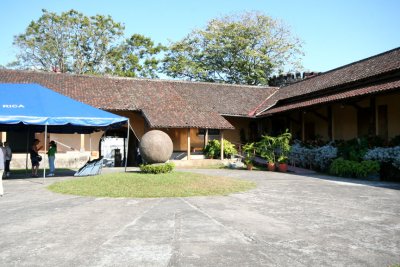
This is the interior courtyard of the museum which is housed in what was formerly the Bellavista Fortress. |

I combined about 5 photos to make this panoramic picture of the interior courtyard of the Museo Nacional. |
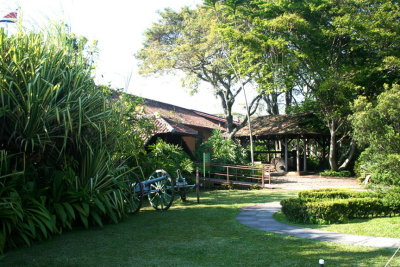
These canons probably date from the days when the Museo Nacional was a fortress. |

Close-up of the canons. |
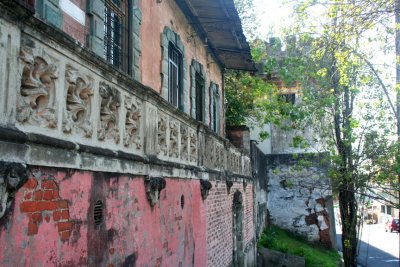
As I was leaving, I took this photo of an old and ornate wall of the Museo Nacional. |

Entrance sign to Morazán Park in San José. |
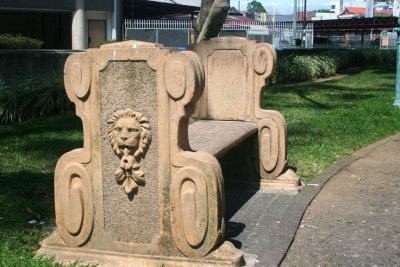
There were some wonderful park benches in Morazán Park. |
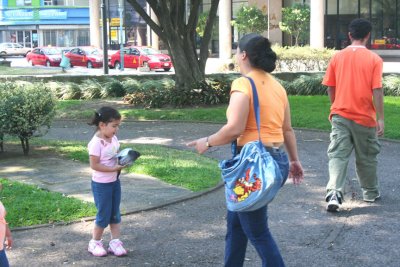
A young girl was holding a pigeon in the park. |
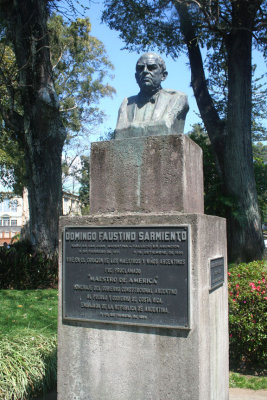
Statue of Domingo Faustino Sarmiento (1811-1888) in Morazán Park. |
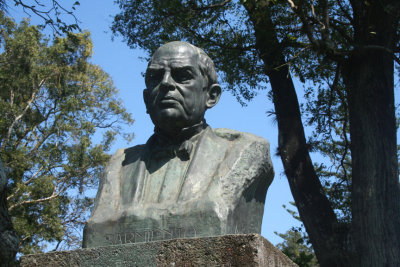
He was an Argentine statesman, educator, author, and was the President of Argentina from 1868 to 1874. |
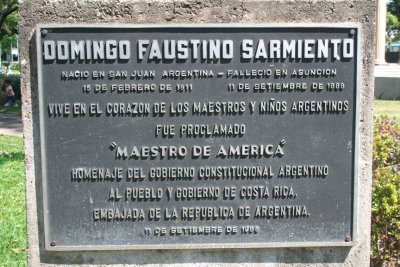
Plaque for Sarmiento under his statue. His well known work "Facundo" (1845) made him famous all over Latin and Central America. |
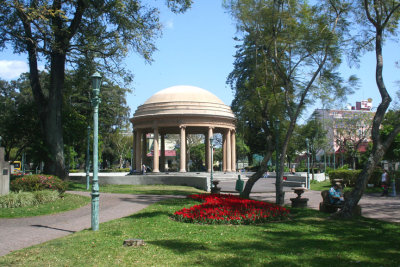
View of the central gazebo Morazán Park with nice flowers in front of it. |
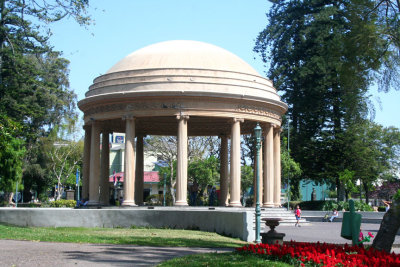
Sunday concerts are often held in the gazebo. |
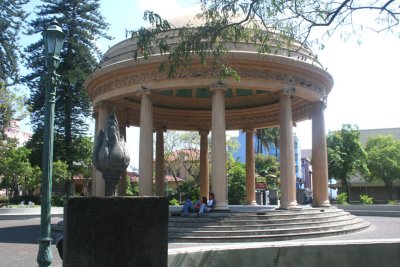
A close-up of the gazebo with a statue in the foreground. |
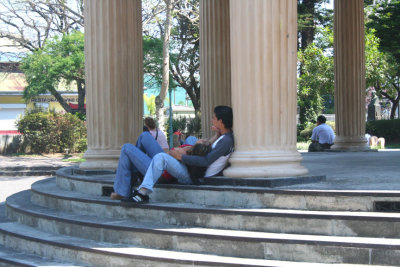
These two young lovers were hanging out in the gazebo. |
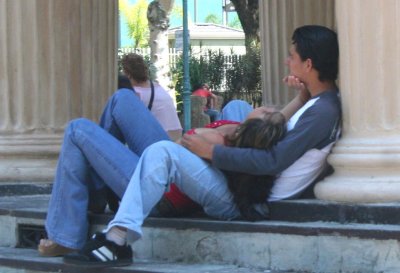
Close-up of the young lovers. |
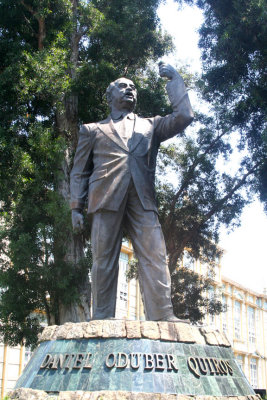
Monument to Daniel Oduber Quirós in Parque Morazán. He was President of Costa Rica from 1974-1978. |
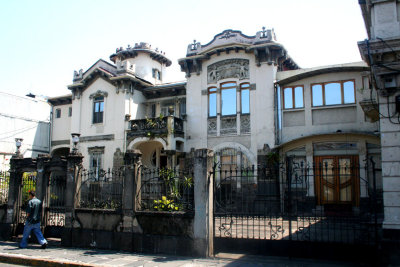
I walked by this interesting building on Calle 6 between Morazán Park and the Museo del Oro. |
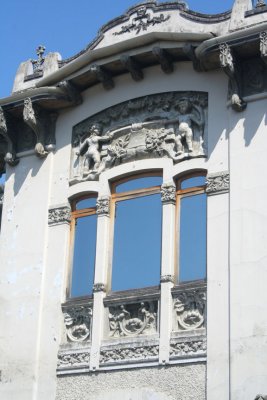
Close-up of the carvings and architectural details of the building. |
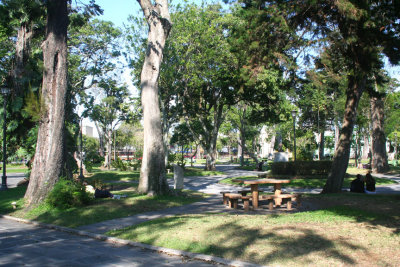
Parque Nacional, San José’s largest park, was remodeled between 2000-2001. While improved, it is full of prostitutes at night. |
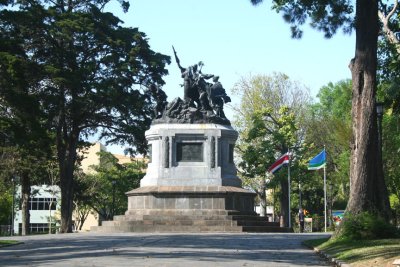
View of the 1856 National Warrior Monument in Parque Nacional, which was cast in Rodin’s Paris studio. |
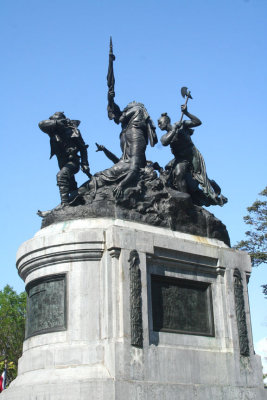
It commemorates the battle against William Walker who attempted to conquer Costa Rica but was defeated. |
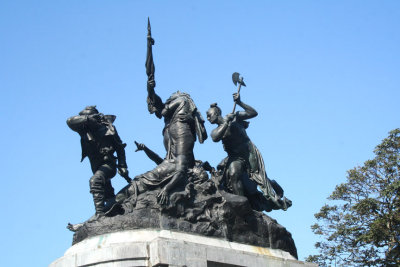
Costa Rican President Juan Rafael Mora launched a surprise attack forcing Walker’s men to flee. |
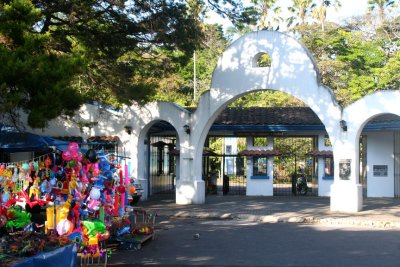
Entrance to the Parque Zoologico Nacional Simon Bolivar (Fundazoo) in San José. |
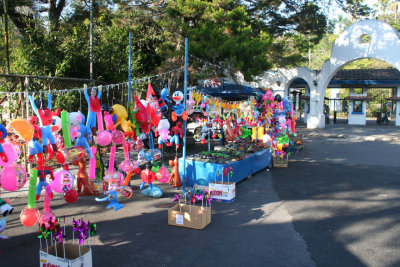
Balloon and souvenir stand outside of the Fundazoo. |
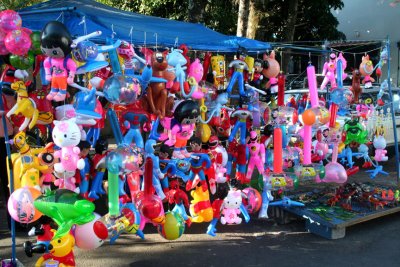
Close-up of the balloons and souvenirs. |
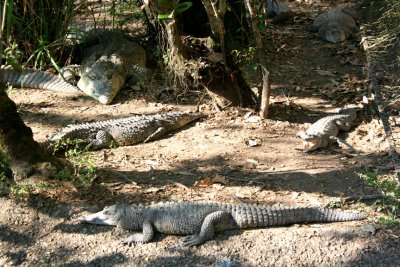
These caimans found in the zoo are of the crocodile family, but smaller. |

These pizotes are member of the raccoon family, and they inhabit the wooded rain forests of Central America. |
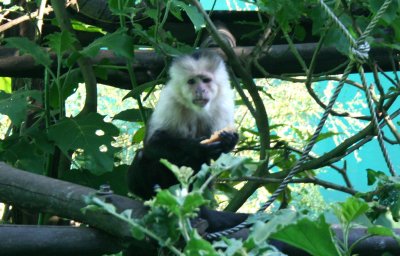
These white-faced capuchin monkeys found in the zoo are very intelligent and can be aggressive. |
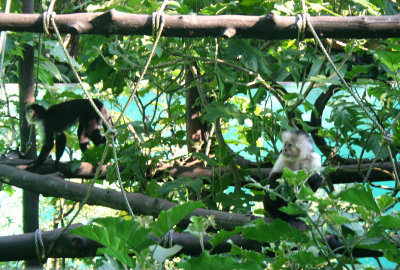
An exhibit of spider monkeys at the Fundazoo. |
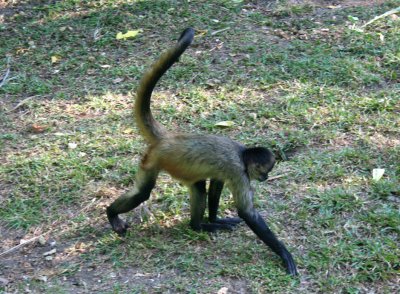
A spider monkey in motion. |
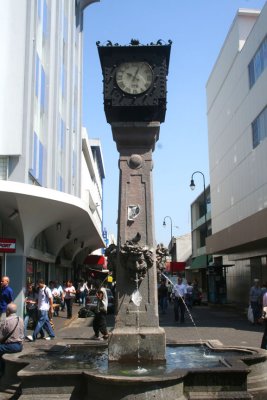
Nice clock tower and fountain in downtown San José. |
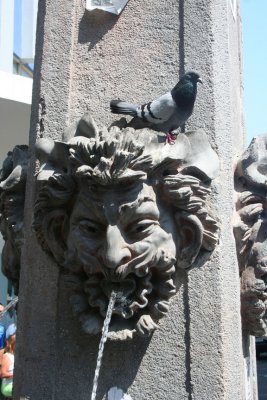
Close-up of the wonderful face on the clock tower spewing water. A pigeon was perched on the head. |
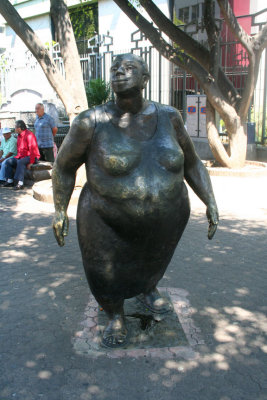
Obese statue adorning a pedestrian street in San José. |
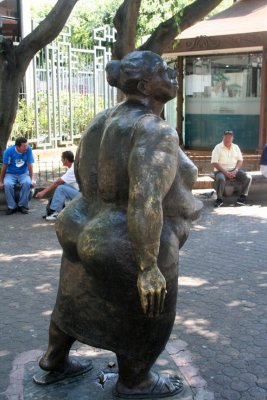
The obese statue has a "maximus gluteus maximus!" |
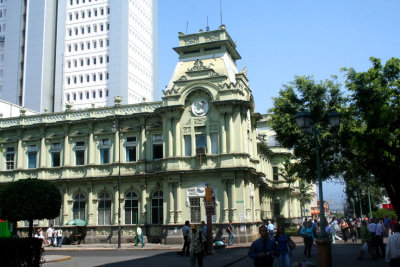
The beautiful Main Post Office building in downtown San José. |
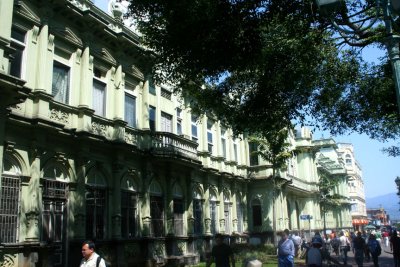
Side view of the beautiful Main Post Office building. |
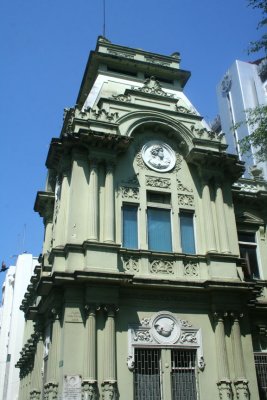
Architectural details with medallions on the Main Post Office. |
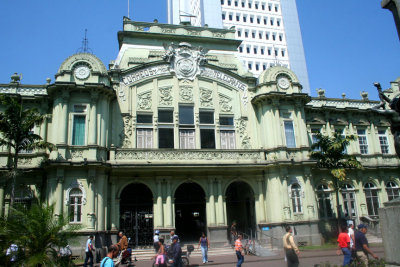
Pedestrians stolling in front of the Main Post Office. |
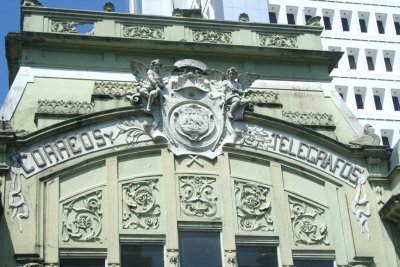
Details of the upper facade of the Main Post Office building. |
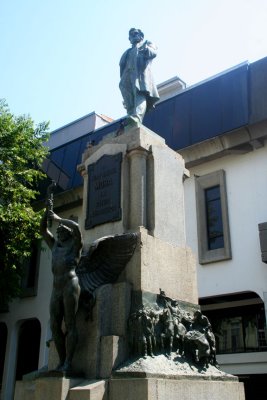
Statue of Juan Rafael Mora who was President of Costa Rica from 1849 to 1859. |
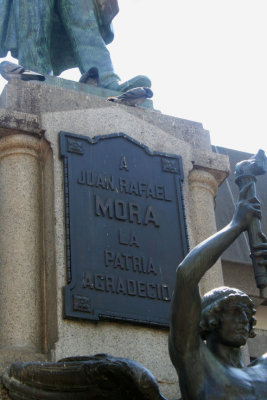
He was best known for repelling an attack by William Walker (in 1856) who attempted to conquer Costa Rica. |
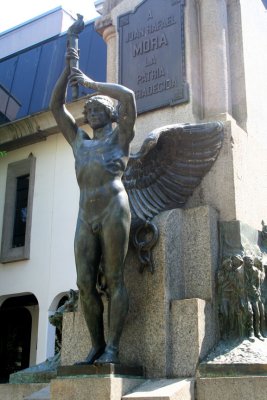
Statue of a man holding a torch under Juan Rafael Mora's tribute. |
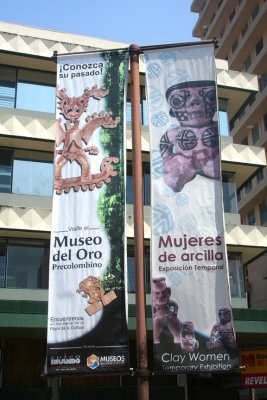
Banners advertising the Museo del Oro (Gold Museum) located off of the Plaza de la Cultura in San José. |
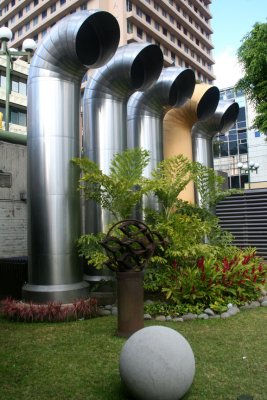
These vent pipes outside of the Gold Museum looked like a modern sculpture. |
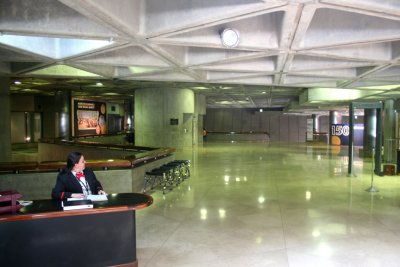
Entrance lobby of the Gold Museum. |
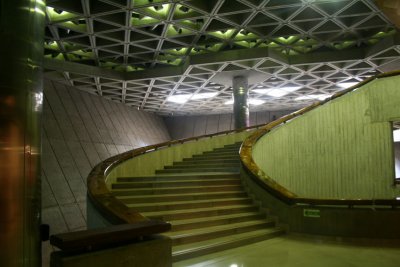
These stairs lead down to a lower basement level of the museum. |
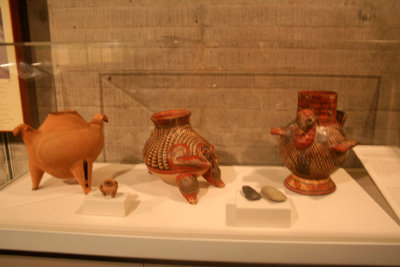
Pre-Columbian pots and bowls on display at the Gold Museum. |
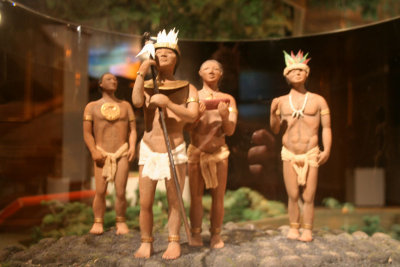
Display of warriors at the Gold Museum. |

Indian going into battle wearing seashells, lots of gold ornaments including on his head, arms and neck and rings on his ears. |
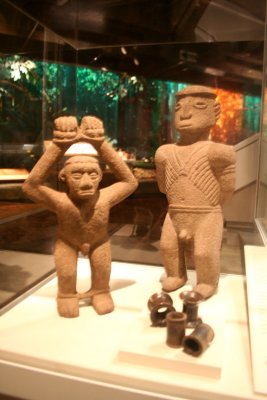
Pre-Columbian statues on display at the Gold Museum. |
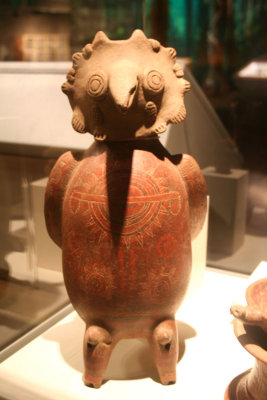
Bird, monkey and alligator images were frequently used as funerary offerings for people of high rank. |
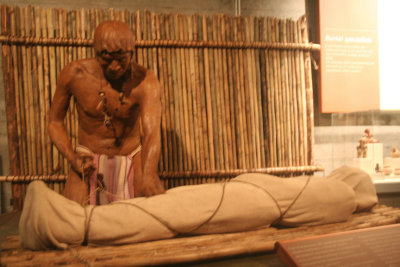
Preparing the corpse was the first step in a series of rituals necessary before burial. |
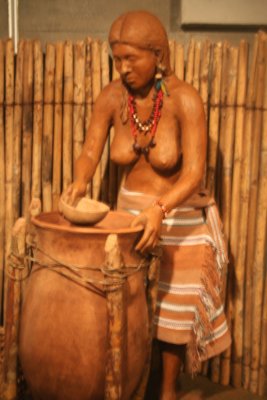
In Bribri tribes, women were responsible for making the chicha (fermented maize) and the food consumed over the days of ritual. |
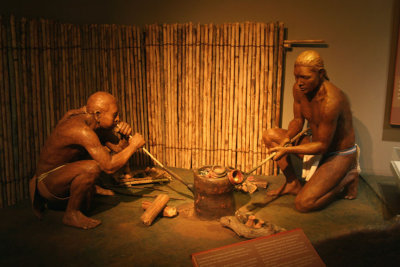
Metallurgy required multiple artisans in the manufacturing process. Gold artisans worked together in these societies. |
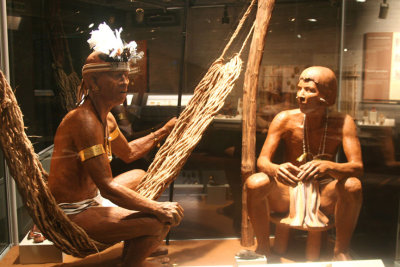
Shamans (who conducted rituals with spirits) had great prestige and power due to their knowledge of ancestral history and myths. |
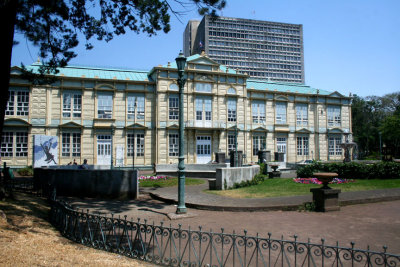
Parque Espana is located directly next to (east) of Parque Morazán. It has many benches, fountains and trees. |
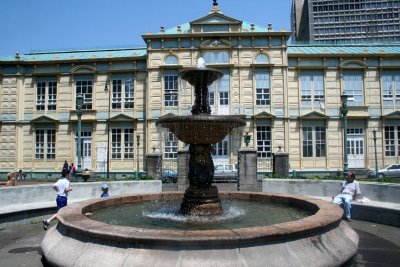
Fountain in the middle of the park. |
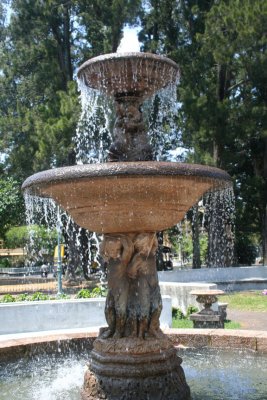
Here, the is fountain spewing water. |
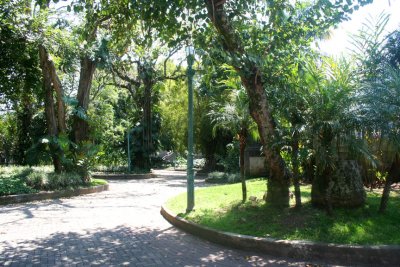
Nice pathway and trees in Parque Espana. |
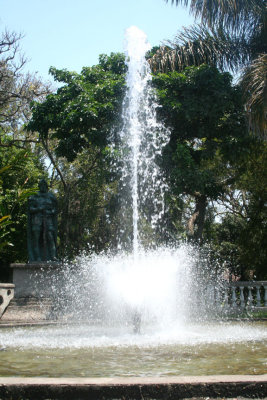
Here's another dramatic fountain in Parque Espana. |
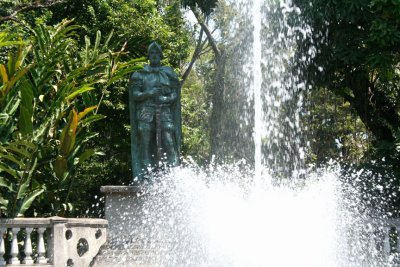
Statue of Christopher Columbus who discovered Costa Rica in 1502. Spain governed Costa Rica as a colonial possession until 1823. |
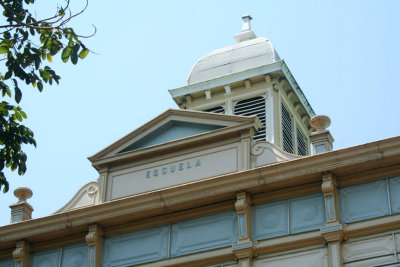
Nice rooftop of an old schoolhouse next to the park. |
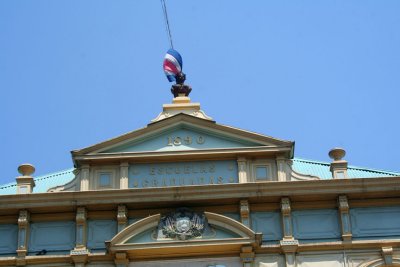
More nice architectural details with the Costa Rican flag flying from the rooftop. |
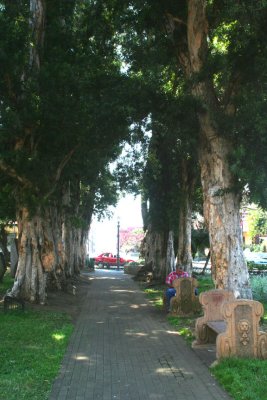
This man was having a relaxing afternoon on the park bench along this pathway in Parque Espana. |











